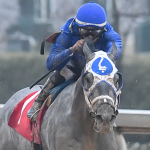
Preakness Quick Sheet: Get to Know the 2021 Preakness Horses

The Pick 4 and the Pick 5 are often considered the most glamorous wagers in racing. Especially on big racing days, bettors pore over the sequences trying to find the best way to hit and make a big score.
The goal of a Pick 4 is to pick four consecutive winners. The bet was introduced at Churchill Downs during the 2000 Breeders’ Cup and quickly spread across the country. Many tracks offer two Pick 4s a day, with the most popular one generally offered on the last four races on the card. The standard minimum wager is 50 cents.
The Pick 5 made its debut at Monmouth Park in 2007. As the name hints, you must select five consecutive winners to cash. The minimum wager is also usually 50 cents.
Both wagers have become immensely popular. At Saratoga Race Course on Saturdays in 2021, both the late Pick 4 and the late Pick 5 averaged more than $1 million in handle. On any given day, Twitter feeds and simulcast signals are flooded with fans and analysts giving their thoughts on playing a Pick 4 or a Pick 5 at a wide variety of tracks. The main reason for their popularity is their large payoffs. If a sequence features a few beaten favorites and a few longshots, payoffs can soar into the five figures. The high-water mark of the 2021 season came on Aug. 12, when the late Pick 5 at Saratoga paid more than $161,000. That day’s late Pick 4 paid nearly $23,000.
In these bets, you have the option of using multiple horses in a race at a higher cost. A 50-cent Pick 4 that uses three horses in each race, for example, would cost $40.50. A Pick 5 using three horses in each race would cost $112.50. Most people do not blindly use their top three picks in a race, however. Rather, they look for some races in which to “single,” or use just one horse, and other races where they can “spread,” or use multiple runners.
People usually go about this in the same way: they’ll single obvious favorites and spread in races that look very tough. At first blush, this strategy makes sense, but is it the best way to get maximum value?
Like all bets, the Pick 4 and the Pick 5 are pari-mutuel. The payoffs are calculated by taking the total pool, and dividing it by the number of winning tickets. The fewer winning tickets out there, the larger the payoff.
As such, using horses that you know everyone else is using is not a great strategy. Even if you stay alive, virtually every other ticket is also still active, so you’re not increasing your expected payoff by much. How many times has the average bettor watched a 3-5 shot coast home and thought, “well, I’m alive ... but so is everyone else!”

The key to making big scores in Pick 4s and Pick 5s is to do the opposite of what everyone else is doing. If you think an odds-on favorite is vulnerable, toss them completely, and use other horses in their stead. Should that big favorite lose, it can result in a big payoff even if favorites win the other legs.
Conversely, the time to single is in races where other people are spreading. If you like a horse in a wide-open race,and you use only them, you give yourself more opportunity to spread in races where people have narrowed down their tickets. If that horse wins at a good price, you’ll set yourself up for a score.
A vivid example of how it can pay to toss odds-on favorites came in the early Pick 5 (Races 1 through 5) at Saratoga on July 24, 2021. The sequence concluded with the Coaching Club American Oaks, headlined by Longines Kentucky Oaks winner Malathaat. She was the gigantic favorite in the field of four, going off at 3-10. Most bettors singled her without thinking twice. However, a more savvy player might have stepped back and thought about the value of using her. She would be included in the overwhelming majority of Pick 5 tickets – and of those tickets, almost all of them used just her. Therefore, if she won virtually no one would be eliminated from the pool, and the payoffs woule be depressed as a result.
Malathaat looked very tough on paper, so there would’ve been nothing wrong with deciding that the sequence wasn’t worth playing due to her presence. However, playing against her also had some merit. Some bettors may have thought that she wasn’t worth such a low price in her first race in nearly three months and decided to look elsewhere for some value. The key to the sequence suddenly became finding a single in one of the four wide-open races and toss Malathaat by using at least one of the other three. It may not have been easy, but if Malathaat lost, the sequence would result in a big payout.
The first four races saw fairly logical results, with the winners going off at 2.40-1, 5-1, 4.80-1, and 3.75-1. Bettors who thought they were home free heading into the last leg received a rude awakening when 14.70-1 longshot Maracuja sprung the upset in the Coaching Club American Oaks. With only one surprising outcome, the early Pick 5 paid $30,146.50 to about 37 winning tickets.
When it comes to making big scores in Pick 4s and Pick 5s, knowing how to play the sequences is just as important as knowing which horse to bet. By crafting plays that go against the tide, you set yourself up for maximum value when you cash.

Please fill out the form below to request information about race horse ownership.